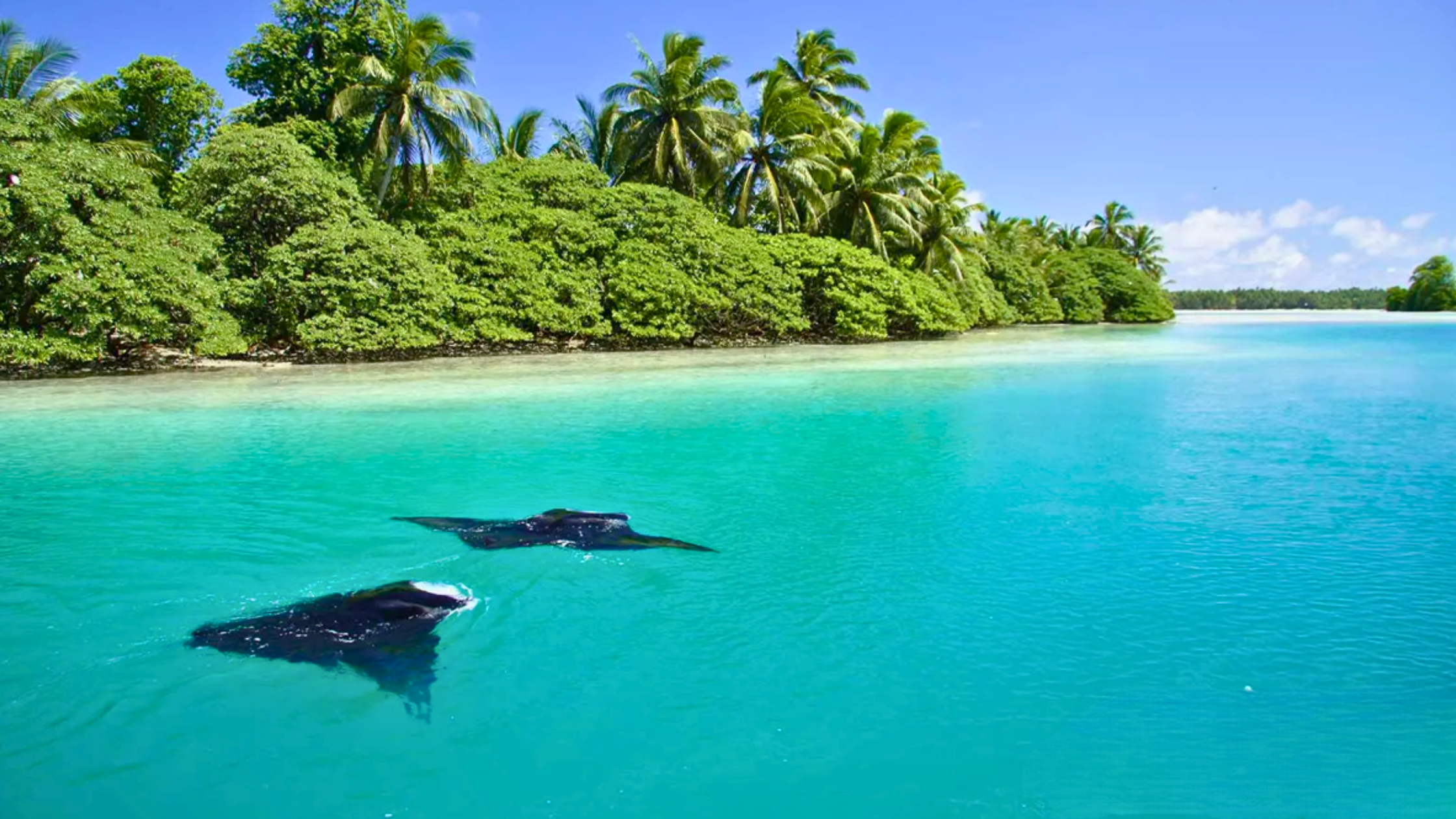Protect the Pacific Island Heritage Marine National Monument
By Erika Pietrzak, May 30 , 2025
The Pacific Islands Heritage Marine National Monument protects a vast and diverse ocean ecosystem vital to both wildlife and Indigenous cultures. Now, new threats put decades of conservation efforts at risk.
Manta rays swim at Palmyra Atoll in the Pacific Islands Heritage Marine National Monument. [Source: San Francisco Gate]
Formerly known as the Pacific Remote Island Marine National Monument, the Pacific Islands Heritage Marine National Monument (PIHMNM) encompasses approximately 490 thousand square miles of ocean habitat, “making the total area of the Monument nearly five times the size of all the U.S. National Parks combined and nearly twice the size of the state of Texas.”
Within its boundaries are seven national wildlife refuges. Due to 165 known hotspots of species abundance, the Monument is home to one of the largest and most pristine collections of a diverse array of species in the world. It is also an important sacred ancestral waterway for Indigenous Pacific islanders and continues to be a space to discover new species.
Established in 2009 and expanded in 2014, PIHMNM is home to dozens of species of coral and large populations of endangered sea turtles, whales, and sharks. It is also home to Kingman Reef, the most undisturbed coral reef within the United States. Kingman Reef also has “a greater proportion of apex predators (sharks and jacks) than any other studied coral reef ecosystem in the Pacific.” The Monument also includes volcanoes that are millions of years old and provide important habitat for Pacific species.
Despite its protected status, the Jarvis Islands are not immune to the impacts of climate change. In 2016, NOAA discovered a mass bleaching event caused by ocean acidification that killed 90 to 95 percent of the coral there. Last year, debris pulled from the Pacific was at a record high, more than half of it fishing-related. Many islands in the Pacific will experience a sea level rise of half a foot in the next 30 years.
Despite the vast evidence of climatic disastrous impacts in PIHMNM and the name change in early January, President Trump released a proclamation using the wrong name for the Monument and began fighting to open the Monument up to commercial fishing, directly against the wishes of the Pacific Remote Island Coalition. President Trump “seeks to allow U.S.-flagged vessels to fish commercially within 50 to 200 nautical miles of the monument’s boundaries.” He argues that since many of the fish in the Monument’s waters are migratory, the denial of commercial fishing does not actually protect fish populations. However, we know this to be a false claim as no-take areas boost populations in surrounding waters that mutually benefit the ocean ecosystem and fisheries. Preventing fishing in this location avoids depleting fish stocks in the future by protecting stocks today. The protection of fishing in these waters also protects the coral and other habitats that can be destroyed by fishing waste and harmful fishing practices, which are more common in large commercial vessels.
While President Trump’s proclamation does refuse foreign vessels from fishing in the PIHMNM, the downsizing of NOAA will make regulating legal fishing and preventing illegal activities particularly hard for this vast oceanscape. Environmental activists and organizations worldwide have condemned opening the PIHMNM for commercial fishing, including the Honolulu Civic Beat, calling it “a highly flippant, off-the-cuff executive order.” Solomon Kahoohalahala, chair of the Pacific Island Heritage Coalition, reacted to this proclamation, stating, “Opening this sacred place for exploitation is short-sighted and does not consider current or future generations of Pacific People who rely on a healthy ocean, and know this special ocean space as our ancestral home.”
Generations of bipartisan conservation efforts in the Pacific are at risk of being completely uprooted. Hawaiians now worry about similar possibilities for the Papahānaumokuākea Marine National Monument. As President Trump seeks to become a global leader in seafood, an area where the United States lacks in the global economy, he does so without regard for decades of work from experts and bipartisan efforts that have protected hundreds of species. Only three percent of our oceans are under strong protection, and removing these protections for the largest monument in the Pacific would be a major step backward in decades of work. To ensure that hard-won victories in ocean conservation are never compromised for temporary economic gains, acting decisively and cooperatively across all political divides is the path to protecting marine heritage.
Change The Chamber is a nonpartisan coalition of young adults, 100+ student groups across the country, environmental justice and frontline community groups, and other allied organizations.
